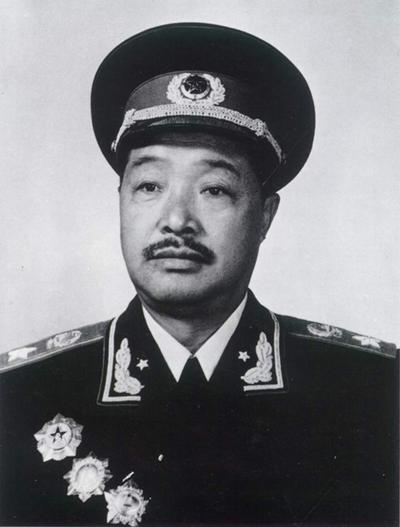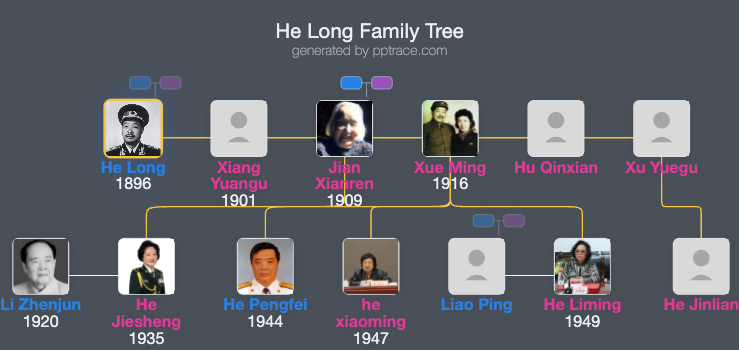
He Long
| Name | He Long |
| Title | marshal of the People's Republic of China (1896–1969) |
| Gender | Male |
| Birthday | 1896-03-22 |
| nationality | People's Republic of China |
| Source | https://www.wikidata.org/wiki/Q700713 |
| pptrace | View Family Tree |
| LastUpdate | 2025-10-27T03:39:31.672Z |
Introduction
He Long was born on March 22, 1896, into a poor peasant family in Hongjiaguang, Sangzhi County, Hunan Province. Due to family financial difficulties early in life, he only received five years of private school education before dropping out to work in farming. Influenced by the Xinhai Revolution, in 1914 he joined the Chinese Revolutionary Party led by Sun Yat-sen and began participating in armed struggles against imperialism and feudalism. He was arrested multiple times and imprisoned, demonstrating a resilient and unyielding spirit.
In 1916, He Long launched a revolution with two kitchen knives, organizing peasant armed forces. Despite numerous failures, he gradually grew and strengthened his forces under his leadership. During the period of warlord chaos, he achieved military successes in campaigns defending the Republic and fostering the rule of law. From 1924 to 1927, he actively supported Sun Yat-sen's policies of “allying with Russia, allying with the Communist Party, and assisting farmers and workers,” and led troops in the Northern Expedition, becoming an important leftist general in the National Revolutionary Army.
After the “April 12 Incident” of 1927, the revolution entered a low period. He Long remained steadfast, participating in and leading the Nanchang Uprising, serving as its commander. After joining the Chinese Communist Party, he gradually established revolutionary bases in western Hunan and western Hubei regions, working with comrades such as Zhou Yiqun and Duan Dechang, and founding the Red Second Army Corps. In 1934, he led his forces to join other Red Army units in a meeting—fighting in western Hunan and launching the Western Hunan Offensive, making significant contributions to the Long March.
During the Long March, he formed the Red Second Front Army in Ganzi, serving as its commander. He resolutely resisted internal party factions and maintained unity within the Party. After the outbreak of the Second Sino-Japanese War, He Long served as the commander of the 120th Division of the Eighth Route Army, leading troops across the Yellow River to coordinate with the Nationalist Army in resisting the Japanese. He commanded numerous battles in northwest Shanxi and central Hebei, including the famous Battle of Chenzhuang.
During the Liberation War, he commanded the Jin-Sui (Shanxi-Suiyuan) forces, liberating large areas of central Shanxi, and cooperated with Nie Rongzhen’s troops to carry out campaigns in Suiyuan and northern Shanxi. After the founding of the People's Republic of China, He Long led the main forces of the North China Field Army to liberate Chengdu and other regions, and promoted land reform and economic development in the southwestern areas. Starting in 1954, he served as Vice Premier of the State Council and Vice Chairman of the Central Military Commission, becoming an important leader in China’s socialist construction.
During the Cultural Revolution, He Long was persecuted; he died on June 9, 1969, at the age of 73. In 1974 and 1982, the Party organization respectively rehabilitated his reputation, fully affirming his contributions to China's revolution and construction. Throughout his life, He Long was loyal to the Party and the people, making significant contributions to China’s liberation and socialist development. He is widely revered as an outstanding proletarian revolutionary.
Family Tree
Tap to expand more relatives
